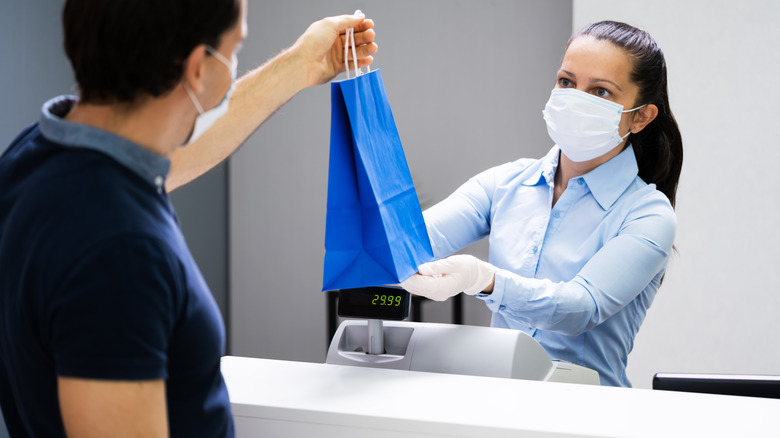Always Check The Label On Over-The-Counter Drugs. Here's Why
It is so easy to obtain over-the-counter (OTC) medications that it is also easy to forget that they are, in fact, drugs. Even if they were obtained legally without a prescription, it is important to educate yourself on any drug that you put in your body.
The National Capital Poison Center reports a true story of a young woman who took four tablets of pseudoephedrine over eight hours, before she realized that the directions said to take only one tablet each day. After she called Poison Control, the specialist determined that given her dosage and body weight, she was at risk for stroke, a fast heart rate, and high blood pressure. She was advised to go to the emergency room, where over the next few hours, her heart was monitored and she was given activated charcoal to prevent further absorption of the drug into her bloodstream. She was discharged after she fortunately developed no additional side effects.
Most people would prefer to spare themselves anxiety and emergency room visits, and that is why it is important to carefully read the label of any drug you take, even if it is over the counter.
This is what to look for on the label of your OTC drug
The U.S. Food and Drug Administration (FDA) advises checking the label of an OTC product before you buy it, and then again each time you take it. This is true even if you have bought the drug before, as manufacturers sometimes update the label.
According to the FDA, the label will tell you the product's active and inactive ingredients, which will help you avoid products to which you may have an allergic reaction. The label will also clarify the purpose and uses for the product including when, how, and how often you should take the product. In addition, you will find warnings about who should not use the product or who should consult a doctor before doing so. You will also find information regarding possible interactions or side effects and under what circumstances you need to stop taking the product and contact a doctor.
It is important to follow the instructions that you see on the label. For example, if the label says to only take two tablets per day, then take no more than that. Otherwise, you are at risk for dangerous side effects. If you have any questions or concerns before or after taking the product, then be sure to consult your pharmacist or health care provider (per University of Rochester Medical Center). In particular, it would be a good idea to ask if the OTC medicine is compatible with other drugs you are taking (per FDA).


